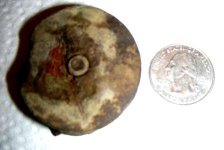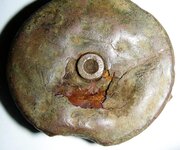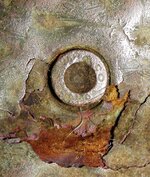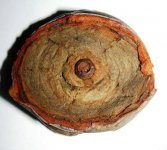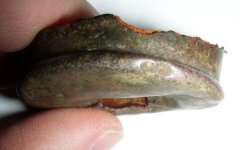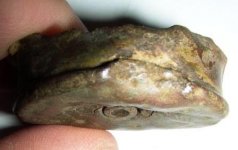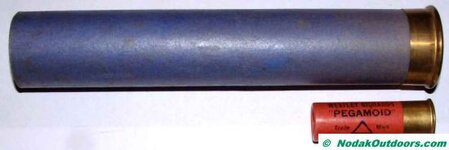SkyPirate
Bronze Member
- Mar 31, 2009
- 1,861
- 83
- Detector(s) used
- Garrett AT Pro, Garrett ProPointer
- Primary Interest:
- All Treasure Hunting
Shotgun or Artillary shell? Updated photos.
I found this at an old homesite dating back to the late 1800's. It looks like a very large shotgun shell. Has short sides and paper inside. measures 2 inch diameter and 5 inches around. Seems to be torn apart. Could it have been an artillary shell? WWI or WWII ? Has some writing around the primer. I can make out "W P (or R) a missing letter C O". And some other symbols I can't make out. Thanks for the help!
I found this at an old homesite dating back to the late 1800's. It looks like a very large shotgun shell. Has short sides and paper inside. measures 2 inch diameter and 5 inches around. Seems to be torn apart. Could it have been an artillary shell? WWI or WWII ? Has some writing around the primer. I can make out "W P (or R) a missing letter C O". And some other symbols I can't make out. Thanks for the help!
Attachments
Last edited:


